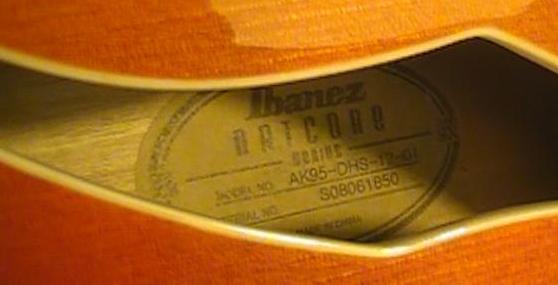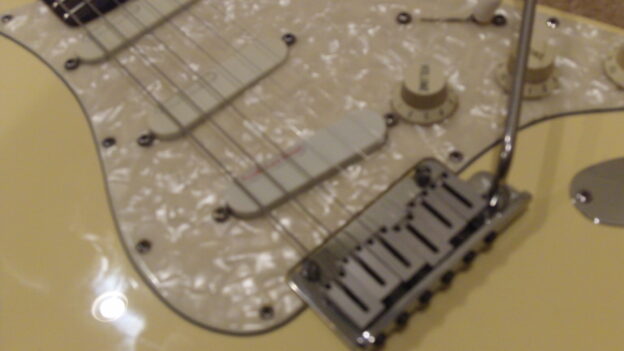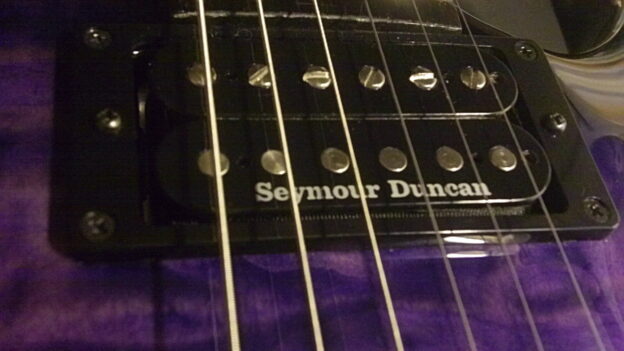By Chad Crawford, PMI Guitar Instructor
If we were to attempt to consider everything there is to know as a musician this article would turn into a book. However, it is not needful to know everything there is to know about music in order to make some great music with the guitar. Many highly regarded guitar songs are relatively simple and fall well within the boundaries of routine hobbyist musician fare. If you have a good command of the basics identified below then you will have most of what you need to play fluently in the popular music styles.
1. Notes of the fretboard – it may seem like a daunting task to memorize all of the notes along the entire guitar fretboard. However, as with anything the trick is to break the task into manageable pieces. It is particularly important to know the notes on the sixth and fifth strings since these notes will be the root notes of your common chords and the reference notes for your scale box patterns. Divide the fretboard into parts according to various schemes and memorize the notes of the parts. Keep doing this week after week. Eventually you will know the notes on the fretboard without having to think about them.
2. Common Chords – the possibilities for chords seems endless, but you do not need to know every possible chord in order to play most popular music styles. Give priority to this list: Major, Minor, Suspended Second, Suspended Fourth, Dominant Seventh, Major Seventh, Minor Seventh, Fifth. Know the fingering for these chords in the open position and also the E and A form bar chords, and you will be able to cover most chords that come up in popular music.
3. Common Scales – Major, Minor, Major Pentatonic, Minor Pentatonic. It is important to know each of these scales in the various positions along the fretboard rather than just the first box pattern. Also, know how to find the beginning note of each pattern on the sixth string without having to always refer to the sixth string root note of pattern one. Then you will not be stuck with always having to start your solo in Pattern One.
4. Scale Pattern Root (octave) Notes – learn the locations of all of the root notes within all of the scale patterns along the fretboard. These will serve as a useful reference for finding resolving notes for your solos, and will also help with quickly identifying the locations of other nearby resolving note choices once you get past simply resolving to the root.
5. Major and Minor Keys – pick a key per week to memorize. Keep doing this until you know each of the notes in every key. Know the Relative Minor key associated with each Major Key. The Circle of Fifths is a great aid to learning these relationships.
6. Scale Harmonizations/Standard Harmony Rules – know the chord sequences for the Major and Minor Keys. For Major keys the Triad chords are Major-Minor-Minor-Major-Major-Minor-Diminished. For Minor keys the sequence is Minor-Diminished-Major-Minor-Minor-Major-Major. You may see these written out as Roman Numerals in this fashion: Major key I-ii-iii-IV-V-vi-vii°, Minor Key i-ii°-III-iv-v-VI-VII. Example, chords in the key of C Major: C Dm Em F G Am B°. Chords in the key of C Minor: Cm D° E Fm Gm A B. If you understand these sequences then you will find that it becomes much easier to decipher the chords of songs you wish to learn, and to assemble your own chord progressions for songs you are writing.
7. Interval formulas for Major and Minor Keys – The Major Scales consists of the following intervals: 1-2-3-4-5-6-7-8, with eight being a repeat of the root note in the next octave. For the Minor Scale the intervals are as follows: 1-2-b3-4-5-b6-b7-8. If you understand these two interval formulas, then it is very easy to see how to covert a major key to a minor key by simply lowering the third, sixth, and seventh intervals by a half step, for instance. Combine this kind of knowledge with knowing where these intervals fall on the fretboard in relation to one another and you will be able to pick out chords, solo phrases, and appropriate resolving notes with ease.
8. Timing Basics – know how to count out 4/4, 3/4, and 6/8 and 12/8 time signatures. Know how to play scales in quarter notes, eighth notes, sixteenth notes, eighth note triplets, and sixteenth note triplets. Practice playing scales with a metronome to ensure your timing is accurate.
Copyright © 2024 Palmetto Music Institute. All Rights Reserved.



